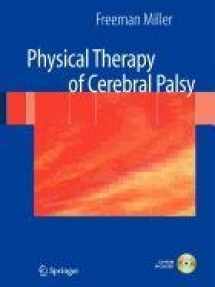
Physical Therapy of Cerebral Palsy
ISBN-13:
9780387515793
ISBN-10:
0387515798
Author:
Freeman Miller
Publication date:
2008
Publisher:
Springer
Format:
Paperback
432 pages
FREE US shipping
Book details
ISBN-13:
9780387515793
ISBN-10:
0387515798
Author:
Freeman Miller
Publication date:
2008
Publisher:
Springer
Format:
Paperback
432 pages
Summary
Physical Therapy of Cerebral Palsy (ISBN-13: 9780387515793 and ISBN-10: 0387515798), written by authors
Freeman Miller, was published by Springer in 2008.
With an overall rating of 4.4 stars, it's a notable title among other
books. You can easily purchase or rent Physical Therapy of Cerebral Palsy (Paperback) from BooksRun,
along with many other new and used
books
and textbooks.
And, if you're looking to sell your copy, our current buyback offer is $0.42.
Description
During the past 25 years computers have been introduced in industry to perform technical tasks such as drafting, design, process planning, data acquisition, process control, and quality assurance. Computerized solutions nevertheless have normally been single, isolated devices within a manufacturing plant. Computer technology is still evolving rapidly. The life cycle of todays' products and production methods is shortening, with continuously increasing requirements of customers, and a trend to market interrelations between companies at a national and international level. This urges a need for efficient storage retrieval and exchange of information. Integration of information flow is urgent inside companies to closely connect together departments, which used to work, more or less, on their own. On the other hand direct communication with outside customers, suppliers, and partner institutions will often determine the position of an enterprise among the competitors. In this sense, computer integrated manufacturing (CIM) is the key of today for the competitiveness of tomorrow. But the realisation of a future oriented CIM concept is not possible without powerful, widely accepted, and standardised interfaces. They are the vital issue on the way to CIM. They will contribute to harmonise data structures and information flows and play a major role for open CIM systems. Standardised interfaces should allow for: Access to data produced and archived on computing equipment which is no longer in active use; Communication between hardware and software from different vendors; Paperless exchange of information.


We would LOVE it if you could help us and other readers by reviewing the book
Book review

Congratulations! We have received your book review.
{user}
{createdAt}
by {truncated_author}


